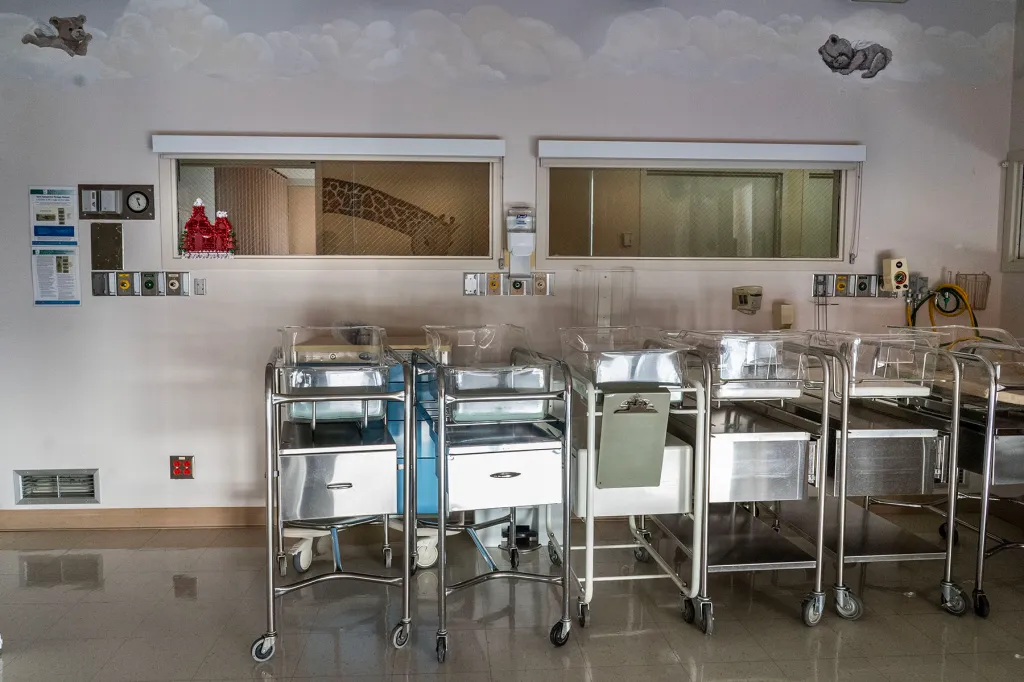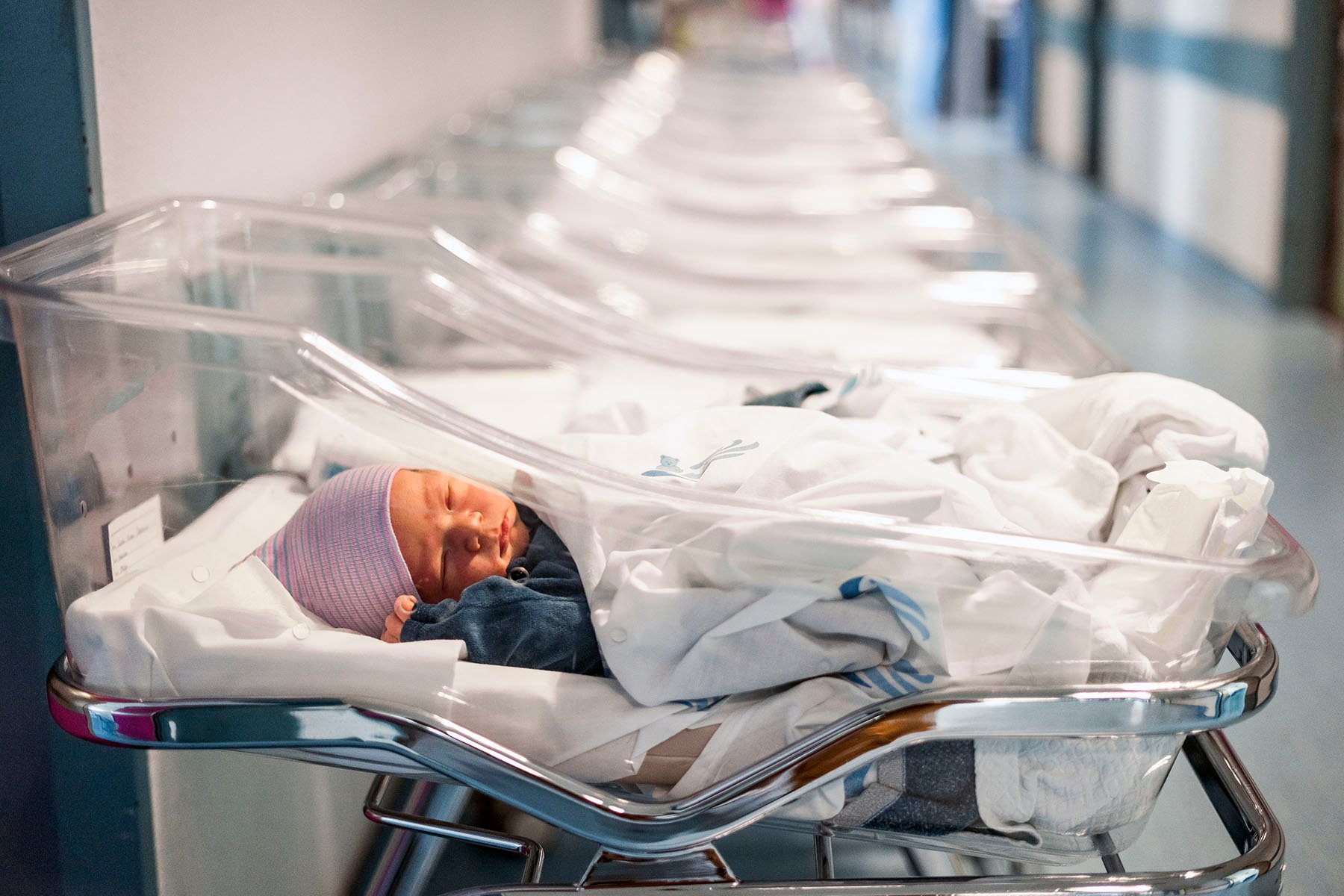When there’s a maternal health emergency, Jessica Wheat springs into action.
Alongside a group of specialized health providers at Research Medical Center in Kansas City, Wheat works fast to make sure patients are able to have their babies delivered safely or their children given critical treatment at the Level III neonatal intensive care unit on site.
“We have just an abundance of resources, and people that know what they’re doing,” the labor and delivery nurse said.
That abundance is coming to an end. Last month, HCA Midwest Health, which owns Research Medical Center, announced it was closing its obstetrics program and NICU. The umbrella company that runs HCA Midwest Health, which oversees multiple hospitals and related sites of care in nearly two dozen states, cited declining births at the hospital as part of its reasons for the closure.
Wheat is worried about the implications for local patients who often struggle to find transportation even across Kansas City. But she’s also concerned about the rural patients outside of the metro area.
“We tend to get smaller hospitals that will Life Flight bleeding moms or moms who are breech or moms who are having a hypertensive crisis,” she said. “We can do the emergency C-section — a lot of smaller hospitals do not have those capabilities. The farther they have to go, the more at risk they’re going to be for complications, even death.”
The availability of obstetrics care in America has been dwindling for years. That could accelerate now, as hospital leaders across the country warn that President Donald Trump’s massive cuts to Medicaid, the federal-state health insurance program for low-income Americans, could leave pregnant people in rural communities with vanishingly few options for medical care.
Obstetrics is one of the most expensive services provided by hospitals, especially in rural areas, which often see a larger portion of Medicaid patients. Nationwide, the program pays for about 40 percent of all births. With financial hits looming, hospitals are primed to close maternity wards first, and rural areas are particularly vulnerable.
“This is going to have an enormous impact,” said Dr. John Cullen, a family physician in Valdez, Alaska, a remote city of about 4,000 people. “Already we’re seeing OB deserts that are increasing in size, and after the passage of this bill those are going to be markedly worse — where people are going to have to drive hundreds of miles before they can get prenatal care, much less delivery.”
For years, hospitals facing financial pressure have shuttered maternity wards. Between 2010 and 2022, more than 500 hospitals across the country dropped obstetrics, per a recent study that also shows more than half of rural counties now have no hospital-based obstetric services. A report from the advocacy group March of Dimes found that 1 in 3 U.S. counties had no OBGYN at all.

There are numerous reasons for the recent closures, ranging from declining births to difficulties hiring local providers. But the biggest issue is financial: Hospitals typically don’t earn enough from labor and delivery to cover the cost. Now, cuts to Medicaid — which will further cut hospital revenues and increase their share of uncompensated care — threaten to strain finances further.
“I do have a lot of concern that we’ll continue to see labor and delivery units close in rural hospitals and potentially even at an accelerated rate, as hospitals feel greater strain due to cuts in the bill,” said Carrie Cochran-McClain, chief policy officer with the National Rural Health Association.
The National Rural Health Association and Manatt Health, a consulting firm, estimated in June that the proposed Medicaid cuts over 10 years could reach almost $70 billion just for rural hospitals. Nearly half of all children and 1 in 5 adults in rural communities are enrolled in Medicaid or the related Children’s Health Insurance Program. The health insurance plan also pays hospitals less for the same services than private insurance does.
“When rural hospitals say, ‘We have these big Medicaid cuts, how do we deal with that shortfall?’ the OB units are going to be first on the chopping block,” said Jamie Daw, an associate professor of health policy at Columbia University.
One analysis from the National Partnership for Women and Families, a nonpartisan organization that supports policies such as equal pay and access to health care, suggests that the new cuts to Medicaid put almost 150 rural hospitals with maternity services at risk of serious downsizing or closing altogether.
The changes to Medicaid — including cumbersome new paperwork requirements for people insured through the program, and cuts to some of the taxes used to finance state Medicaid programs — largely won’t take effect until after the 2026 midterm elections. But already, hospitals are preparing for huge reductions in services, and pointing to labor and delivery as one of their most vulnerable offerings.
Michigan-based Trinity Health operates five hospitals that include maternity services. Hospital leaders are deeply concerned about service cuts that would make it harder for pregnant patients to get appropriate medical care, said Dr. Sharon O’Leary, an OBGYN and the organization’s chief data analytics and chief equity officer.
-
More from The 19th
- Reproductive health clinics are losing federal funding — and conservative states will be hit hardest
- For many rural women, finding maternity care outweighs abortion access concerns
- Most Planned Parenthood patients are insured through Medicaid. The Supreme Court just undercut that.
When patients have to travel further for prenatal care, they are more likely to cut the number of doctors’ visits or to receive no prenatal care at all. Studies over the past several years have shown that obstetrics unit closures — and increased travel time for pregnant patients — result in higher rates of pregnancy-related complications, including premature birth and low birth weight.
“Our biggest fear is that as women lose coverage that they will not seek prenatal care,” O’Leary said.
The consequences are likely to be heightened in areas that are already underserved, and where birth outcomes are worse: rural parts of the country, and, in particular, large swaths of the South.
“While we are concerned about the impact the bill will have on all hospital services, we are particularly concerned about its impact on labor and delivery services,” said Richard Roberson, president and CEO of the Mississippi Hospital Association.
Already, rural areas have seen access to reproductive care dwindling, particularly in the past three years, since the fall of Roe v. Wade allowed states to outlaw abortion. Preliminary data shows that medical residents for OBGYN are applying in smaller numbers to states with abortion bans and a recent study in the medical journal JAMA, the first to assess the relationship between abortion bans and provider availability, found that in Idaho, the number of OBGYNs fell by 35 percent between August 2022 — when the state implemented its near-total ban — and December 2024.
Abortion ban states, which are largely in the South, also have higher rural populations, worse birth outcomes and larger shares of hospitals at risk of closure.
“It’s an additional trend — on top of this piece of the general financial pressure — that’s going to also affect predominantly rural Southern communities,” Daw said. “It seems like a perfect storm of these concurrent trends really really affecting access to care.”
If hospitals reduce their pregnancy-related offerings, few alternatives will be able to fill in the gap. Earlier this year, the Trump administration began withholding millions of dollars in family planning grants through Title X, the federal program that supports family planning services for low-income people. Planned Parenthood, a major provider of services that include cancer screenings, testing for sexually transmitted diseases and contraception, is also one of the largest Title X providers. Most Planned Parenthood clinics are in rural or otherwise medically underserved areas. The federal budget and tax law also includes a provision that would cut federal Medicaid funding from Planned Parenthood, though that policy has since been blocked by a federal court ruling. In recent weeks, several clinics have announced their plans to close.
“You have to think of them as related,” Daw said. “It’s definitely not helpful to have all of these changes happening at the same time and really undermining the safety net for reproductive-aged women.”
Cochran-McClain said when a provider with a background in obstetrics care leaves a rural town or city, that impacts health services more broadly: Often, that provider was also providing contraception, general gynecological care and routine screenings.
“It’s so interconnected. While we’re talking specifically about labor, delivery and pregnancy, it can have an impact more broadly on access to women’s health in rural communities,” she said. “It’s been a rough couple of years before all of this, so it just feels like it’s a worsening trend in terms of overall access.”
The closure at Research Medical Center in Kansas City — where its obstetrics program is scheduled to close down in early September — also shows that even when a person in a rural area is forced to travel greater distances into a city setting for specialized care, those services aren’t guaranteed.
Wheat and other affected nurses at Research Medical Center, where they are represented by National Nurses United, said HCA Midwest Health has not provided enough information about the logistics of winding down services. Will the rest of the hospital, including its ICU unit, take emergency patients who need labor and delivery services? Or will the remaining staff in other areas of the hospital get specialized training?
HCA Midwest Health, which did not immediately respond to a request for comment from The 19th, said in a statement to a media outlet that it is working with area health providers to ensure patients have other delivery options.
Wheat has lined up another nursing job in labor and delivery with a different hospital system. In her text group chats with other impacted staff, there is a sense of sadness. She believes the obstetrics-related health providers will find other work, even if it means even more gas mileage to get to a new job. But Wheat keeps thinking about what’s to come for the patients.
“I’m emotionally exhausted. It is hard,” she said. “We’re just grieving for the community at this point, because we know they’re going to have a lot of issues after we’re gone.”





